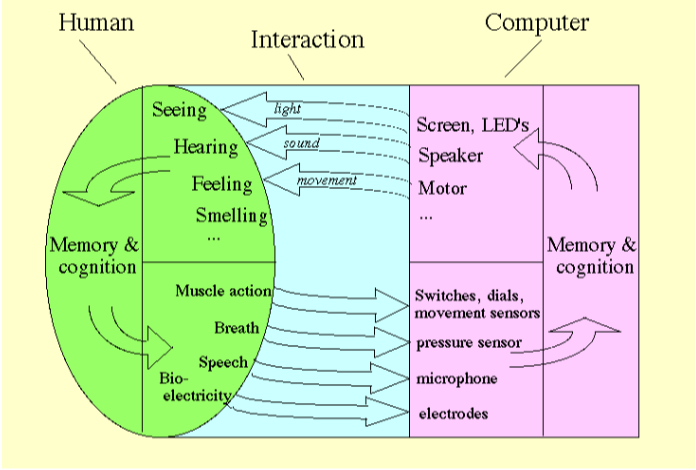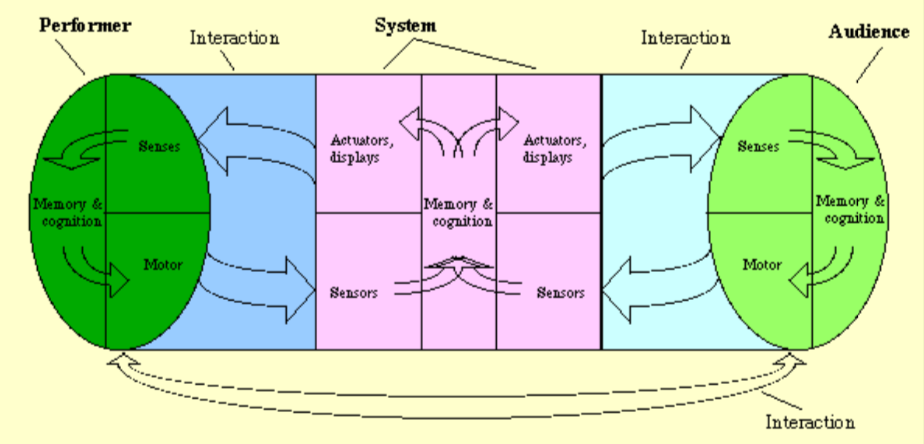The starting point and usage of electric media to make art can be found in music, as it has a long tradition of performance and of precise and intimate relationship between human and technology. In comparison to musical instruments where the technology was reflected in the instruments and the type of sound generation process determined the design of the instrument, this relationship is often less clear in instruments that use electricity.
Soon after electricity was discovered people started to use this new medium to generate sound. It was interesting to read, that most of electronic musical instruments where based on a keyboard, since it can be found on a variety of instruments. In addition with a number of knobs, they have been the standard interface object for making electronic music for many years.
Instrument designers seemed to exploit the freedom of design offered by the new medium by focusing on the possibilities of the human-being, rather than copying the shape and dimension of traditional instruments. But the question of how to deal with this total freedom has not been answered yet. A suggestion is to look at the most sensitive effectors of the human body, like hands or lips, as well as gestures and manipulations that human use in traditional instruments or other means of conveying information.
There were interesting exceptions like the Theremin or Trautonium. People also started to use electronic gloves. Nowadays, there is a wide variety of sensors available. It also became possible to develop alternative MIDI-controllers, which could be entirely new forms based on humans rather than on the technology.

The diagram shows the classic human-machine interaction loop with examples of several interaction modalities. Modalities are closely related to perception and within each sensory modality other (sub) modalities can be distinguished. In fact, most of our everyday life activities involve multiple modalities – did you know that?
The sense of touch is important in traditional instruments, as well as in other tools for art forms. But the human sense of touch (tactual perception) differs from other senses as it is an active explorations. The sense of touch consists three main senses: Tactile, kinaesthetic and haptic perception. However, active haptic perspective is the main sense that can be applied in interfaces. Also bio-eletricity such as EMG and EEG can be used to control a system. (If you are interested in EEG installations, read my other blog entry)
The paper also discusses the importance of feedback: Visual feedback is often displayed on LCD screens, but tactual feedback from the sound source itself is hardly used. The articulatory feedback tries to restore the relationship between the feeling and the sound produced. It is also mentioned, that the ‚feel‘ has to be synthesized artificially.
In traditional performance set up the audience is passive, the performer active. To make the performance interactive it is necessary to make two active parties: the performers and the audience, who communicate with each other trough the system. This means, those two interactions can take place at the same time: The performer communicates to the audience through the system and the audience communicates with the performer by interacting with the system, as you can see in the diagram.

The use of electronic media offers many possibilities for new ways of interaction. The paper also describes a variety of sensors, which convert physical energy into electricity. F.e.: From classic buttons and switches to Joysticks, Magnetic Field Sensors, Bend sensors, Pressure sensors Tilt sensors and also Gyroscopes, Photocells and Photoresistors, Some of them have already been familiar to me, especially from the course „Interaction Design“ and due to the Research and Concept Project for „Klanglicht“. I don’t want to go deeper into those sensors, because I think the paper already gives a good overview and conclusion to each of them.
I like the aspect of cheaper alternatives, as some of the techniques and sensors are regularly highly expensive. It motivates oneself to build prototypes and try out new ideas. With regard to the “Pocket Code” Project, I actually wanted to read something about interfaces as well.